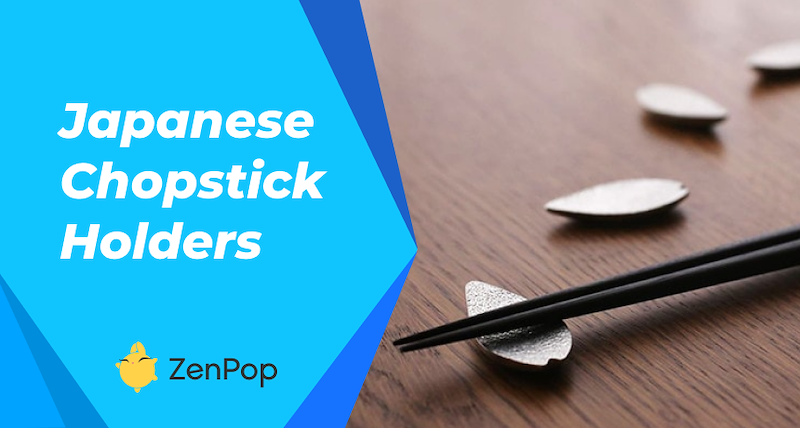
</title><meta name="robots" content="noindex"> The different types of Japanese chopstick holders
Chopsticks are not just one of the coolest eating accessories that make eating noodles fun; they are also the original traditional cutlery used in some Asian countries like Japan. Just like the common table setting, using chopsticks comes with rules and extra accessories. That's where chopstick holders or rest come in. Chopstick holders are present in formal dinners as a convenient place to keep the tip of the chopsticks off the table and away from contamination.
This article will cover everything you need to know about chopstick holders and eating etiquette in Japan.
What are Chopstick Holders / Rests in Japan?
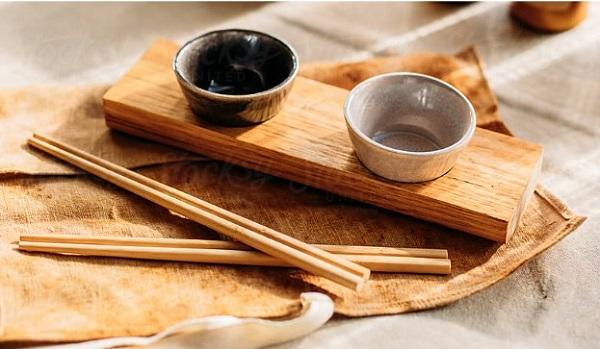
Chopstick holders are called hashioki (箸置き) or hashi-makura (箸枕) in Japan. The name quite accurately describes what they are and what they're used for. Hashioki are usually small elevated platforms placed on the table; they're meant to hold the narrow end of the chopsticks and keep them from rolling while the table is being set when you're resting or simply done eating.
If you're already familiar with Japanese chopsticks etiquette, then you know that there are certain ways that to place the chopsticks in the bowl. The ideal way is to put it horizontally across the bowl with the tip facing the user's left side; standing your chopsticks vertically in your bowl is believed to bring bad luck or just downright rude. Chopstick holders eliminate all the stress as a convenient alternative. However, the holders are still placed in front of the dish and set to allow the chopsticks to point toward the left when placed on them.
Chopsticks, in general, hold a special meaning in Japan. In the early days, people in Japan believed that it served as a special bridge between the gods and humans. When people offered chopsticks to a deity, they believed that the deity would reside in the chopsticks. Now, it is just used for taking meals like ramen but tries not to offer your chopsticks to any deity to be on the safe side.
Did you know that there are several types of ramen in Japan? Read about the different types of Japanese ramen here.
Why you Should Use Chopstick Holders
Fortunately, chopstick holders aren't just decorative. Functionally, it is considered more hygienic since letting the tip of the chopsticks touch the table might be unsanitary, or the chopsticks might roll and fall off the table, which would certainly interrupt your meal. Besides that, chopstick rests are simply beautiful additions to your table, a way to bring a little bit of art to your every meal.
Types of Chopstick Holders
Chopstick holders come in different ways; however, they are usually indented in the middle to create a space for the tip of your chopsticks. Originally, they were made in regular shapes like rectangles or circles, but nowadays, they come in creative shapes of fishes, birds, ribbons and even rabbits. Some are handmade, while others are mass-produced. They can also be made with different materials like wood, porcelain, glass, plastic, metal, paper or even precious stones.
Another cool thing about these holders is that they serve as a convenient gift for friends or lovers that use chopsticks.
Wooden Chopstick Holders
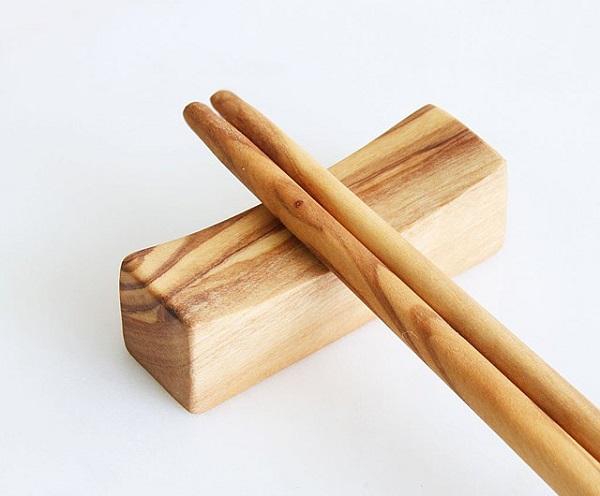
Chopstick holders made of wood are simple yet elegant. If you’re going for the traditional Japanese dinner table look, we recommend this wooden hashioki.
The best thing about it is that it won’t break when dropped. Depending on the design, you can also rest your spoon and fork on this type of chopstick rest. This Japanese wooden tableware is often finely carved, but there are also ones with patterns and motifs that symbolize the country’s culture and traditions.
Wooden chopstick rests are a favorite among collectors, especially people with a genuine interest in the land of the rising sun’s culture and traditional designs.
Ceramic Chopstick Holders
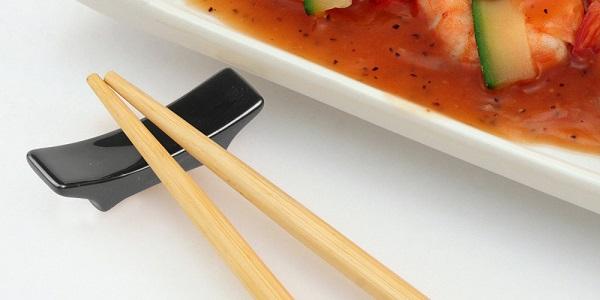
If you prefer a decorative table, ceramic chopstick rests are the way to go. But since this material is brittle, you have to be careful not to let it fall on the floor or it will shatter.
Ceramic chopstick holders vary in shape, size, and design. A lot of manufacturers make them cute and quirky too! They can be shaped like animals, painted with flowers, and have other interesting patterns.
It’s also easy to find paper crane-inspired (orizuru) ceramic chopstick rests. And you know what’s the best thing about it? They can be used as table decorations too! Orizuru chopstick rests are typically hand-painted.
Some chopstick holder makers create this tableware dual-functional. Aside from its original function, it can hold sauce or wasabi as well.
Ceramic is a material that’s easy to clean. It is non-toxic as well. And if you’d like an inexpensive option, ceramic chopstick holders are recommended.
Glass Chopstick Rest
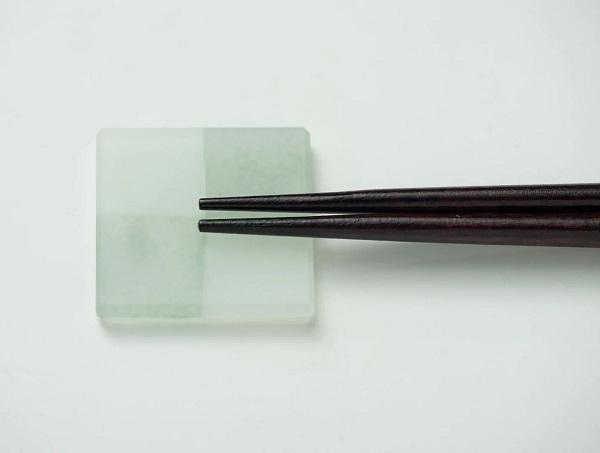
Glass chopstick rests are yet another decorative option. With its clear color, it suits a lot of themes. And just like ceramics, they can come in colorful and adorable designs as well.
Collectors and Japanese culture enthusiasts who appreciate handmade glasswork will surely appreciate glass chopstick rests. The price of one can be as low as 3 bucks to as expensive as $50 or even more. It all depends on who made the tableware.
A Japanese artist by the name of Saki Fujimoto is just one among many who creates chopstick rests made of glass. The Toyama-based glass artist creates simple yet functional and stunning chopstick rests from her studio.
If you want to add a seasonal look to your table, chopstick holders made of glass will likely be your best option. It’s very easy to find ones that are spring-themed (as in sakura-shaped holders), Halloween-themed, and even Christmas-themed.
Metal Chopstick Holders
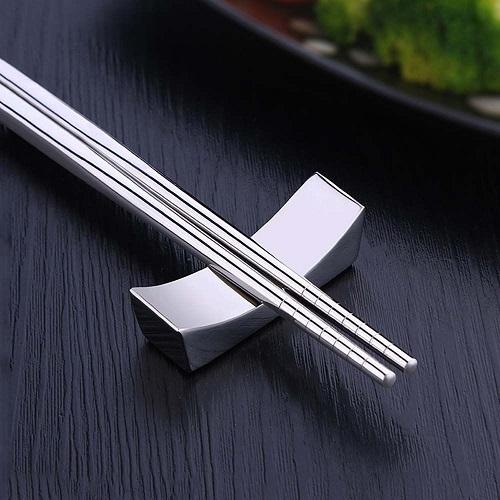
Metal isn’t just used to make chopsticks. They can be used for chopstick rests too! Metal chopstick holders are a modern twist to this traditional tableware. When it comes to durability, they take the top spot. There are cheap ones, but there are also chopstick holders at a higher price point.
You can find them in different metallic colors. Some are as small as the regular chopstick rests, while others are made larger.
Decorative Chopstick Holders
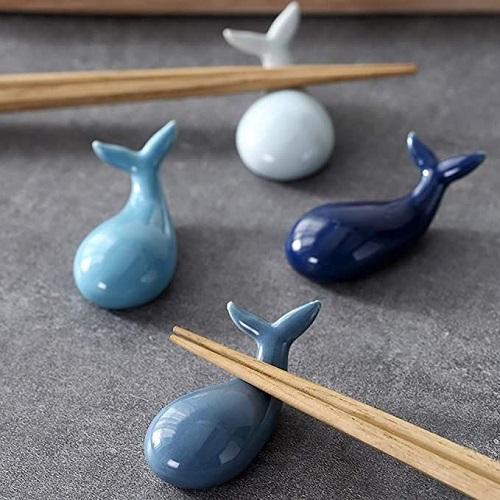
Those decorative chopstick holders are made from diverse material, and re mostly popular for the shapes they are taking, like the whales pictured above! They are perfect if you want to decorate your table as well!
Bamboo Chopstick Holders
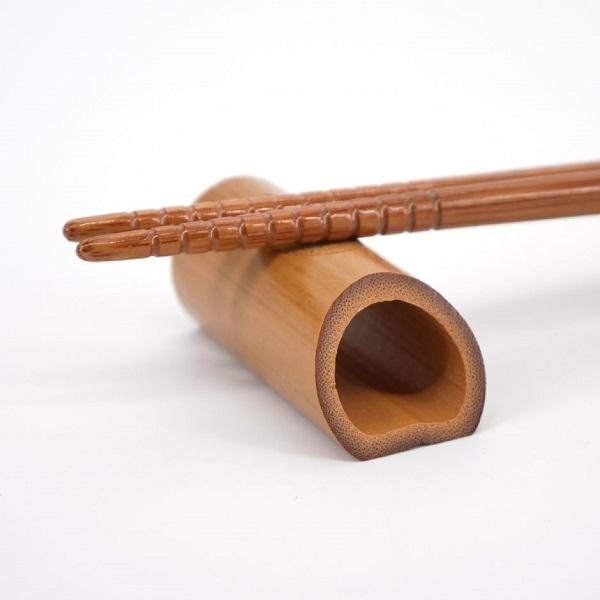
Add an organic aesthetic to your Japanese-inspired table with chopstick rests made of bamboo. What you’ll notice about high-quality bamboo hashioki in Japan is that their materials mostly come from Kyoto.
The cultural capital, where the famous Arashiyama Bamboo Grove is located, is where the country’s best bamboo are located. The trees thrive in the city’s intense warm and cold climate. The best thing about bamboo is that they’re durable yet lightweight. Chopstick holders are just one among the many tools that use this material.
Bamboo chopstick rests come in many shapes. We know you’d expect the typical shape of the bamboo used as chopstick rests. But there are other designs as well.
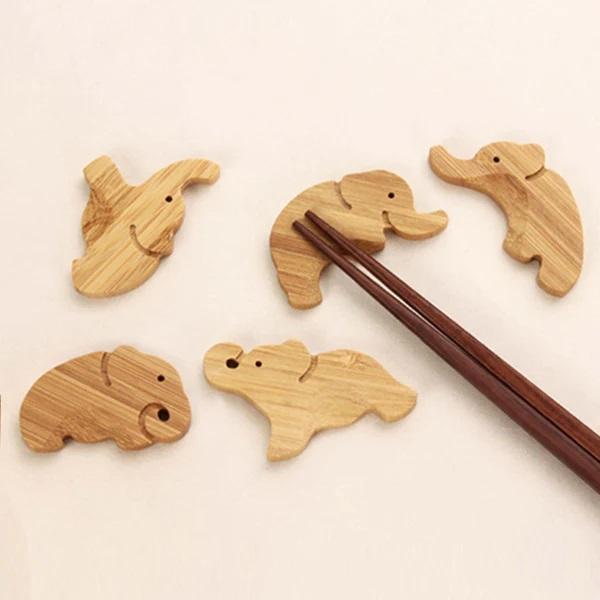
One example is the bamboo knot chopstick rest. It is an excellent fusion of modern aesthetics with traditional Japanese materials. You’ll also see cute designs that use animal shapes.
Plastic Chopstick Holders
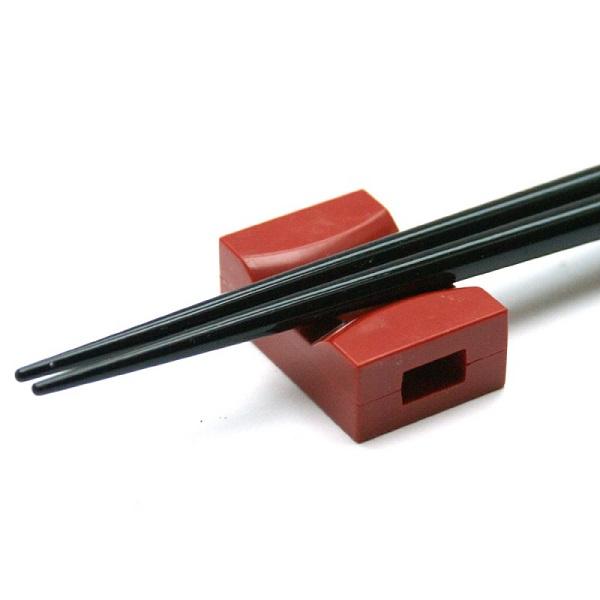
Chopstick holders made of plastic are probably the cheapest among the ones you can purchase. Some bento box sets would even include them. They also come in regular and unique designs, just like the other types.
Paper Chopstick Holder
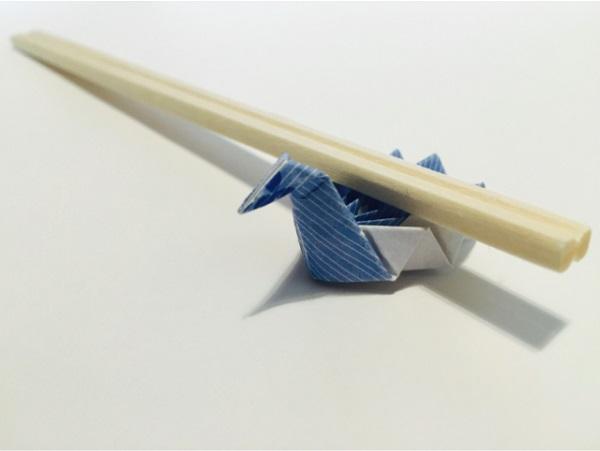
Paper chopsticks are free. And they’re typically made by the diners themselves.
Some establishments simply don’t serve food with chopsticks on a rest. They’re simply wrapped in paper. So, it’s time to do some origami with the chopstick wrapper! Some people create boat origami to serve as a paper chopstick rest. Others use paper cranes.
But if you want something simple, we have a step-by-step guide below.
How do you make chopsticks rest with wrappers?
- Fold the paper in half, then fold it once again in half.
- Fold the paper in half lengthwise.
- Fold one end to form a triangle then fold it inward. Do the same on the other end. Afterward, you should have an isosceles-shaped paper.
- Open the paper and create a dent on the top where the chopsticks can rest. And you’re done!
- If you want a colorful dining table to impress your guests, you can also try getting creative by using origami paper to create paper chopstick rests.
How do you use chopstick rests?
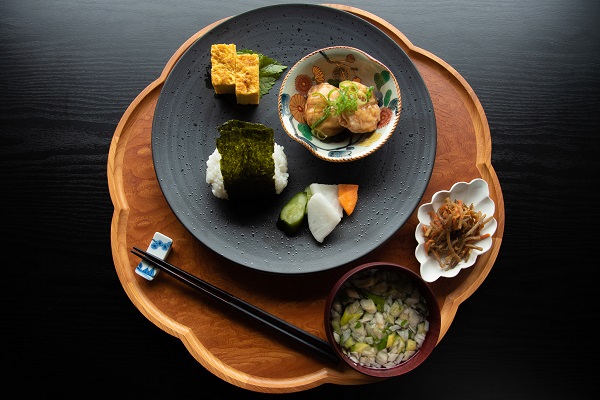
Hashioki is used as part of the table setting of restaurants and high-end establishments called ryotei (料亭). The tips of the chopsticks are placed on it before the meal is served. Aside from sanitary reasons, a hashioki prevents the chopsticks from rolling down the floor from the table.
As the guest/diner
Use the chopstick holder when you need to put down your chopsticks. If you’re given disposable chopsticks (割り箸), follow our recommended steps to create your own hashioki using the wrapper.
The chopstick holder is used before and after the meal. After you eat, the chopstick holder keeps the table from getting dirty as the leftovers won’t get to its surface. But if the place doesn’t have it and you didn’t make a chopstick rest, you can place the chopsticks on top of the bowl after you eat. Just make sure to keep them parallel so you won’t be getting those odd looks from the locals.
What Are the Rules When Using Chopsticks?
As earlier mentioned, chopsticks are a staple in Japanese cuisine, and like any cultural tradition, there are certain etiquettes and customs to follow when using them. Even with your chopstick holder beside you, these rules have cultural significance so they should be followed if you want to show your respect for Japan.
How to Hold Chopsticks
The proper way to hold chopsticks is by placing the first chopstick between your thumb and index finger. Then, place the second chopstick between your index and middle finger and use it to pick up food. It may seem tricky but when you get used to it, it’ll be as easy as holding a pen. If you need more guidance on how to hold your chopsticks, read this article.
Pointing
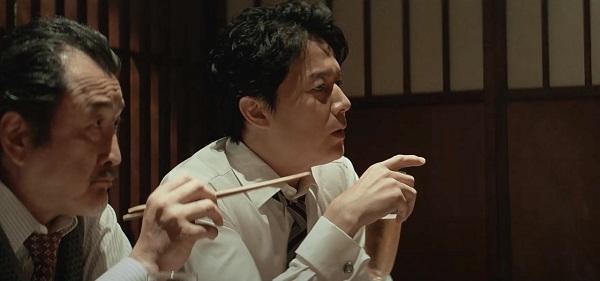
This is actually a taboo that should be avoided. It is considered rude to point at someone with your chopsticks, just as it is considered rude to point with your finger. Instead, if you need to get someone's attention, simply raise your hand gently or call out their name.
Stabbing
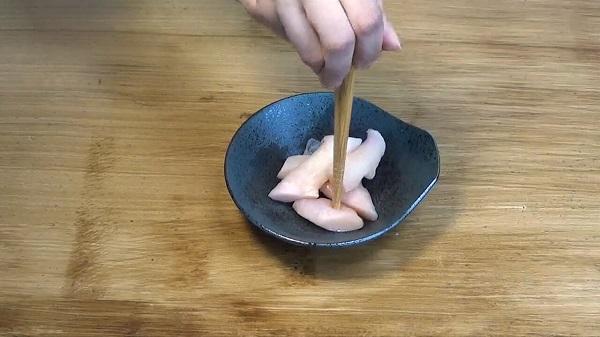
Stabbing food with chopsticks is considered impolite. If you do not know how to use chopsticks, stick with other cutleries. Chopsticks should be used to pick up food, not skewer them. It does not matter whether you stab your food with one or two of your chopsticks, it is still impolite.
Sticking Chopsticks Upright
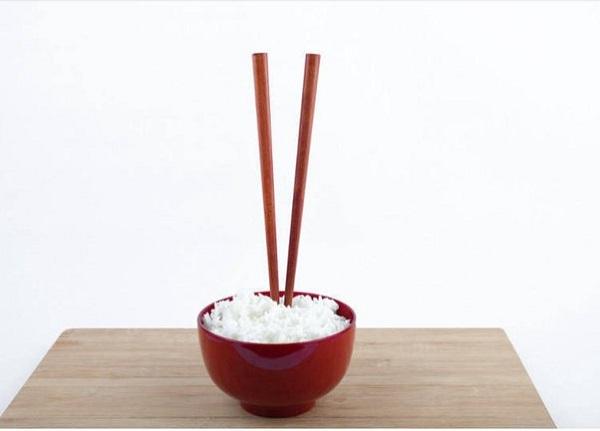
Sticking chopsticks upright into a bowl of rice is reminiscent of incense sticks in funeral rituals and is considered very disrespectful. It is best to lay chopsticks flat on the plate or hold them in your hand while eating.
Sharing Food
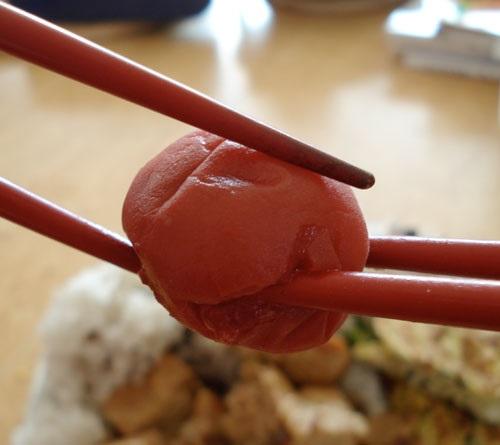
When dining with others, you should not use chopsticks to pick food from a shared plate and then bring it directly to your mouth. Instead, use the opposite end of your chopsticks to pick up a small portion of food and place it on your own plate, then bring it to your mouth. Also, you should not transfer or collect food from people via chopsticks.
Licking Chopsticks
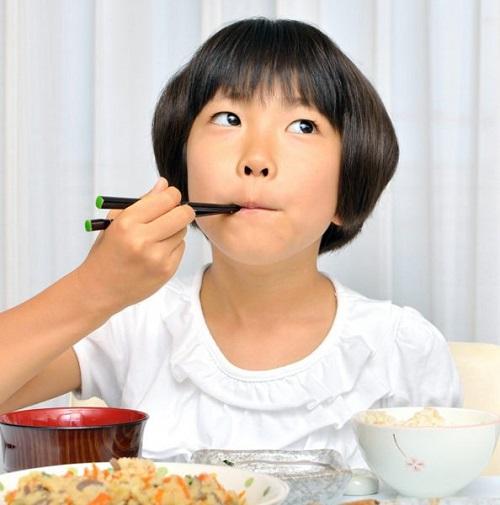
Now, that’s just nasty. Licking chopsticks or any other utensils during a meal is not exactly a good look plus it is probably unsanitary. Even when the food tastes heavenly, it is best to clean any excess food off your chopsticks with a napkin or a small plate, rather than your mouth.
In conclusion, chopstick holders are precious tablewares that are important in Japanese dining. The etiquette for using chopsticks in Japan is also important because it shows a deep respect for traditional customs. Understanding and following these etiquettes, even if you are not of Japanese descent, is a way of demonstrating respect for the culture and people of Japan.
If you are just a little obsessed with Japanese culture, you're in luck. Here at ZenPop Japan, we offer snack boxes with amazing snacks from Japan.
This article was originally written by our freelance writer Umm-Kulthum Abdulkareem and edited by us.
